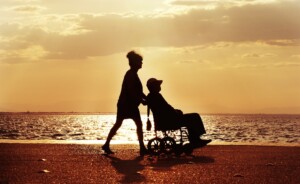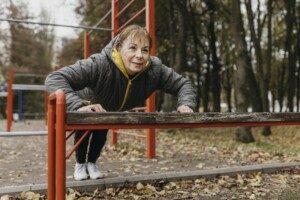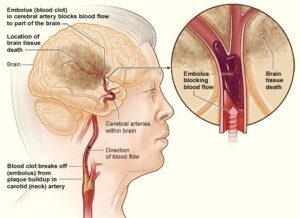
There’s plenty of studies showing that exercise lowers the risk of suffering from a stroke, but what about outright prevention of a massive or severe stroke?
“A lifelong habit of exercise is, in itself, associated with prevention or diminution of the process of arteriosclerosis (hardening of the arteries), which is the underlying cause of most strokes,” says Morton Tavel, MD, Clinical Professor Emeritus of Medicine, Indiana University School of Medicine, and author of “Health Tips, Myths and Tricks: A Physician’s Advice.”
“Thus, over the long run, exercise can prevent some ‘massive strokes,’” says Dr. Tavel.
Though numerous studies clearly show that regular exercise goes a long way at lowering the risk of an ischemic stroke (blood clot in brain), there is no known way to guarantee that exercise will have a 100 percent preventive effect on a stroke, let alone a massive one.
However, people who’ve been regularly exercising, and then have a stroke, are far less likely to have a massive or severe type when compared to inactive people who’ve had a stroke.

Freepik
Stroke but Can Still Walk
One study (Krarup et al) looked at 265 people, mean age 68, who had a stroke but were still able to walk. Other risk factors were accounted for.
The top one-quarter of patients who exercised the most were 2.5 times more likely to have a LESS severe stroke when compared to patients in the bottom quarter.
Interestingly, the exercise in the study subjects wasn’t intense or strenuous, and included walking, lawn care and gardening.
But what about intense and strenuous exercise?
Higher levels of exercise do MORE to lower the risk of a stroke. The reduction percentage doesn’t stop at neighborhood walks and gardening.

Shutterstock/Monkey Business Images
A meta-analysis by Lee et al compared stroke incidence and death between moderate to highly active people and mildly active people.
• For cohort studies, highly active people had a 25% lower stroke risk or mortality compared to low-active people.
• For case-control studies, the very active had a 64% reduced risk of stroke occurrence than low-active people.
• When the cohort and case-control studies were combined, the very active subjects had a 27% lower stroke risk and death rate than did the mildly active people.
• The results were similar, however, with moderately active subjects.
It is not known how to make exercise prevent a stroke with 100 percent certainty.
One reason an avid gym-goer, triathlete or mountain biker could have an ischemic stroke is if they have untreated high blood pressure.
Though exercise lowers blood pressure, a poor diet might keep it in the stroke-risk range. Not all workout enthusiasts have healthy diets.
Another cause of stroke in a fitness enthusiast is untreated (undiagnosed) atrial fibrillation, a heart rhythm disorder that causes blood to pool in the heart.
This can cause a clot that then travels to the brain.

National Heart Lung and Blood Insitute
A person who hits the gym hard several times a week and then runs on other days, may still suffer a stroke if they have other stroke risk factors such as a body mass index in the overweight range and alcohol use.
Everything must be in place in order to lower, as much as possible, your risk of a stroke. This includes adhering to the best kind of exercise regimen.
Best Exercise Regimen for Stroke Prevention
• Make it scheduled! Schedule your workouts like anything else very important in life.
• Do cardio AND weightlifting.
• Do not hold onto the treadmill. This is very detrimental and a waste of time (here’s why).
• Strive for a V taper. This means that your waist has less frontal width than your shoulders. You do NOT have to be skinny to have a V taper.
• Focus on big compound move exercises like the killer fat-burning deadlift, weighted squat, bench press, dumbbell press and seated row.
• Strive for at least 7,000 steps a day. Avoid the “sitting disease,” which is a risk factor for stroke!
And while we’re at it, if you smoke, QUIT.










































